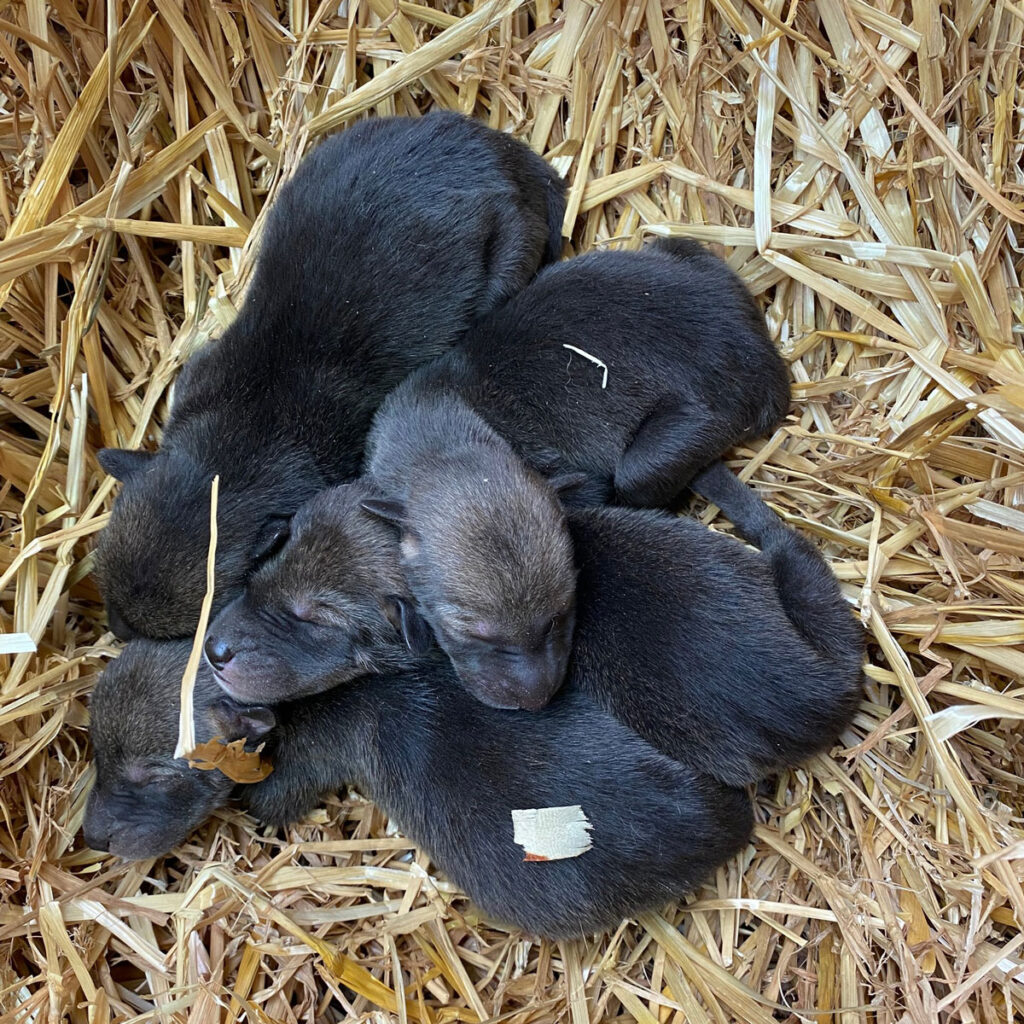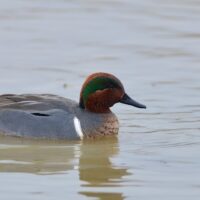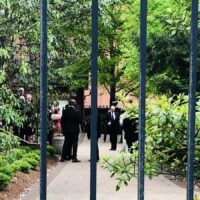In lieu of an LBL Wildlife Report, Tracy Ross and the Woodlands Nature Station’s lead naturalist John Pollpeter discuss the surprise birth of four rare red wolf puppies. There are only around 200 red wolf puppies in existence on the globe, and Land Between the Lakes is currently home to six of them.
“We weren’t expecting it,” Pollpeter begins. “Our male, Jasper, is 13 years old, which is very unusual for him to be able to breed — in fact, he broke the record. At the end of April, we started noticing signs of pregnancy in our female, Ember. We started checking the den; we got the dens prepared just in case. But we weren’t expecting anything.”

“We popped in one morning, and there were four puppies right there,” Pollpeter continues. “We were very excited about them because red wolves are critically endangered. They’re the rarest wolf that you’re going to find.” Currently, LBL accounts for around 3% of the global red wolf population.
The Woodlands Nature Station is one of 45 facilities that are part of the endangered species captive breeding program run by the US Fish and Wildlife Service and the Association of Zoos and Aquariums. “They determine who does and who doesn’t breed,” Pollpeter explains. “Jasper had reached the end of his breeding cycle. Typically, they don’t breed after the age of 11 or 12.”
Pollpeter says that the nature station didn’t want to separate Jasper and Ember, as red wolves are a social species. “He was able to have four healthy, happy, little, squirmy, wiggly baby pups. We’re really excited about them — a little nervous because we are dealing with a critically endangered species, and we want them to be able to add to the population of red wolves in the South.”
Pollpeter explains that the original red wolf territory ranged from Kentucky to Florida and Virginia to Texas. As more European settlers moved to the South and started working in agriculture, wolves became seen as pests and were effectively wiped out. “The population of red wolves got down to about 12 or 14 animals by 1975,” Pollpeter says. “They found those on the Gulf Coast of Louisiana and Texas.”
Red wolves are totally endemic to North America and thrive in southern woodlands, swamps, bayous, and everglades. They average in size of about 50 to 75 pounds. Gray wolves are the largest, weighing 75 to 125 pounds. Coyotes are the smallest and most prolific, weighing around 25 to 45 pounds.
Pollpeter says that the nature station will likely have daily red wolf pup programs starting in June. This is six weeks after their birth, when wolf pups typically start exploring their environments. But for right now, “they’re still in a very vulnerable state. We could still lose them very easily,” Pollpeter warns. “It’s up to Mother Nature to be able to care for them even though they are in captivity.”
“Ember and Jasper are in complete control of this, and they’re responsible for caring for their young. If they want us to see them, they’ll let us see them,” Pollpeter concludes.
For more information on the Woodlands Nature Station, visit the Land Between the Lakes website or the nature station’s Facebook page.






